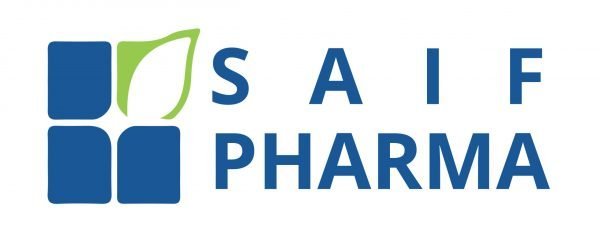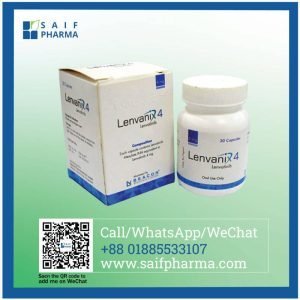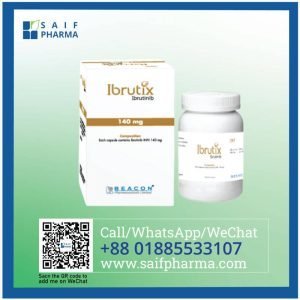Getinib 250 mg (Gefitinib)
Gefitinib is a tyrosine kinase asset indicated for the first-line treatment of cases with metastatic non-small cell lung cancer (NSCLC) whose excrescences have epidermal growth factor receptor (EGFR) exon 19 elisions or exon 21 (L858R) negotiation mutations as detected by an FDA-approved test.
Limitation of Use Safety and efficacity of Gefitinib hasn’t been established in cases whose excrescences have EGFR mutations other than exon 19 elisions or exon 21 (L858R) negotiation mutations.
Description
Gefitinib is a kinase asset. The epidermal growth factor receptor (EGFR) is expressed on the cell face of both normal and cancer cells and plays a part in the processes of cell growth and proliferation. Some EGFR cranking mutations (exon 19 elisions or exon 21 point mutation L858R) within-small cell lung cancer (NSCLC) cells have been linked as contributing to the creation of excrescence cell growth, blocking of apoptosis, adding the product of angiogenic factors, and easing the processes of metastasis.
Gefitinib reversibly inhibits the kinase exertion of wild-type and certain cranking mutations of EGFR, precluding autophosphorylation of tyrosine remainders associated with the receptor, thereby inhibiting farther downstream signaling and blocking EGFR-dependent proliferation.
Gefitinib binding affinity for EGFR exon 19 omission or exon 21 point mutation L858R mutations is more advanced than its affinity for the wild-type EGFR. Gefitinib also inhibits IGF and PDGF- intermediated signaling at clinically applicable attention; inhibition of other tyrosine kinase receptors has not been completely characterized.
Pharmacology
Gefitinib inhibits the epidermal growth factor receptor (EGFR) tyrosine kinase by binding to the adenosine triphosphate (ATP)- binding point of the enzyme. Therefore the function of the EGFR tyrosine kinase in cranking the Ras signal transduction waterfall is inhibited, and nasty cells are inhibited. Gefitinib is the first picky asset of the EGFR tyrosine kinase which is also appertained to as Her1 or ErbB-1. EGFR is overexpressed in the cells of certain types of mortal lymphomas-for illustration in lung and bone cancers. Overexpression leads to unhappy activation of the apoptotic Ras signal transduction waterfall, ultimately leading to unbridled cell proliferation.
Lozenge & Administration
The recommended cure of Gefitinib is 250 mg orally formerly diurnal with or without food until complaint progression or inferior toxin. Don’t take a missed cure within 12 hours of the coming cure.
Interaction
Attendant use with CYP3A4 corrupters (e.g. rifampicin, phenytoin, carbamazepine, barbiturates) may reduce serum gefitinib situations. Tube attention may be increased with potent CYP3A4 impediments (e.g. itraconazole, ketoconazole). Increased INR or bleeding events with warfarin. This may increase tube situations of metoprolol. May complicate vinorelbine- convinced neutropenia. Dropped tube situations and implicit reduction in efficacity with medicines that affect gastric pH (e.g. PPIs, H2-receptor antagonists).
Contraindications
Acuity. Lactation.
Side Goods
Common side Goods are pruritus, rash, angioedema, urticaria, epistaxis, haematuria, alopecia, dry mouth and skin, nausea, puking, anorexia, stomatitis, diarrhea, nail diseases, delicacy, pyrexia, proteinuria, eye pain, corneal corrosion or ulcer, aberrant eyelash growth and elevations in blood creatinine. Infrequently, pancreatitis, erythema multiforme, poisonous epidermal necrolysis, corneal membrane sloughing, optical ischemia, or optical hemorrhage.
Gestation & Lactation
Gestation order. There’s positive substantiation of mortal fetal threat, but the benefits from use in pregnant women may be respectable despite the threat (e.g., if the medicine is demanded in a life-changing situation or for a serious complaint for which safer medicines can not be used or are ineffective).







